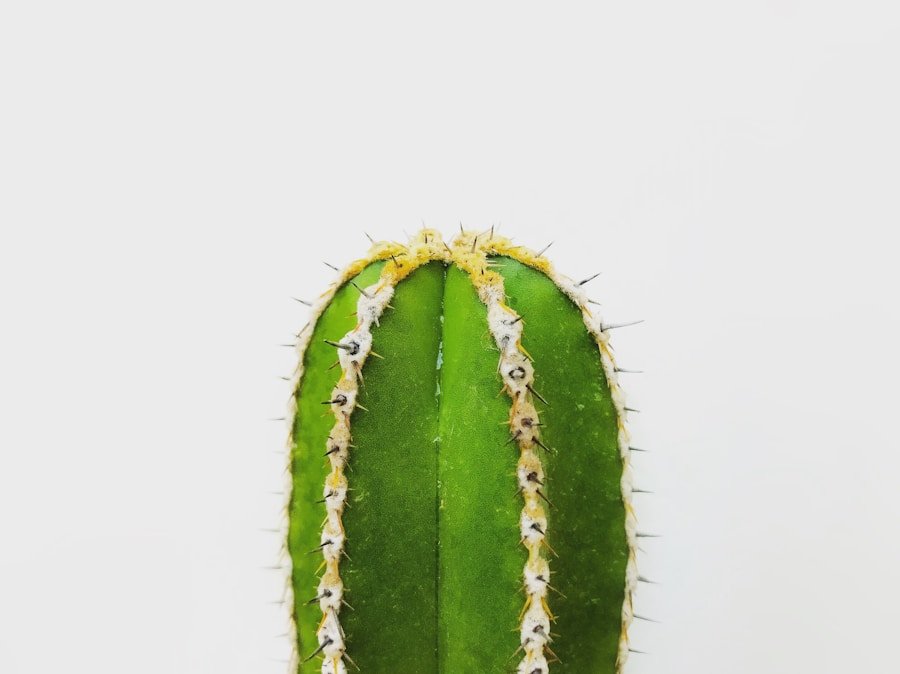Snake plants, also referred to as Sansevieria, are a popular choice for indoor spaces due to their robust nature and ability to purify the air. One effective way to increase your plant collection or share with others is through propagation. There are two primary methods for propagating snake plants: division and cuttings.
The division method involves separating the rhizomes of a mature plant, whereas cuttings involve taking a leaf or section of a leaf and stimulating root growth. It is crucial to grasp the fundamental principles of snake plant propagation before attempting to propagate your own plants. Snake plants are relatively easy to propagate, making them an ideal choice for those new to plant propagation.
Familiarizing oneself with the different propagation methods and best practices for each will significantly increase the chances of successfully growing new snake plants. Regardless of whether you opt for division or cuttings, it is essential to have a thorough understanding of the process and the necessary tools and materials before commencing.
Key Takeaways
- Snake plants can be propagated through cuttings or division
- Propagation requires the right tools and materials such as a sharp knife and well-draining soil
- Propagating snake plants from cuttings involves cutting a healthy leaf and allowing it to root in water or soil
- Propagating snake plants from division involves separating the rhizomes and planting them in separate pots
- Newly propagated snake plants require minimal care and should be placed in indirect sunlight to thrive
Selecting the Right Method for Propagation
Understanding the Two Methods
Division involves separating the rhizomes of an established plant, while cuttings involve taking a leaf or leaf section and encouraging it to grow roots. The method you choose will depend on the size and health of the parent plant, as well as your own preferences and experience level.
Choosing the Right Method
Division is typically best for larger, more established plants, while cuttings can be a great option for smaller or younger plants. Before deciding on a propagation method, it’s important to assess the health and size of the parent plant. If the plant has multiple shoots or “pups” growing from the base, division may be the best option. If the plant is smaller or doesn’t have multiple shoots, taking a cutting may be the better choice.
Considering Your Experience Level
Additionally, consider your own experience level and comfort with each method. Division can be a bit more invasive and may require more skill, while cuttings are generally easier and less risky. Ultimately, the right method for propagation will depend on your specific circumstances and preferences.
Gathering the Necessary Tools and Materials
Before you begin propagating snake plants, it’s important to gather all the necessary tools and materials. For division, you’ll need a sharp, clean knife or garden shears, as well as a suitable potting mix for repotting the divided sections. For cuttings, you’ll need a sharp, clean knife or scissors, as well as a suitable potting mix for rooting the cuttings.
Additionally, you may want to have some rooting hormone on hand to encourage root growth in the cuttings. In addition to tools and materials for propagation, it’s important to have suitable pots or containers for the newly propagated plants. Make sure the pots have drainage holes to prevent waterlogged soil, and choose pots that are slightly larger than the root system of the propagated plant.
Having all the necessary tools and materials on hand before you begin will help ensure a smooth and successful propagation process.
Step-by-Step Guide to Propagating Snake Plants from Cuttings
| Step | Description |
|---|---|
| 1 | Select a healthy snake plant with strong, mature leaves for propagation. |
| 2 | Use a sharp, clean knife to cut a healthy leaf into several sections, each at least 2 inches long. |
| 3 | Allow the cuttings to dry and callus for a few days to prevent rotting. |
| 4 | Plant the cuttings in a well-draining soil mix, ensuring the cut end is buried and the top is exposed. |
| 5 | Place the newly planted cuttings in a warm, bright location with indirect sunlight. |
| 6 | Water the cuttings sparingly, allowing the soil to dry out between waterings. |
| 7 | Monitor the cuttings for new growth, which indicates successful propagation. |
Propagating snake plants from cuttings is a relatively simple process that can be done with just a few basic tools and materials. To start, select a healthy leaf from the parent plant and use a sharp, clean knife or scissors to cut it into sections about 2-3 inches long. Make sure each section has at least one node, which is where the roots will grow from.
Once you have your cuttings, allow them to callus over for a day or two before planting them in a suitable potting mix. After allowing the cuttings to callus over, plant them in a well-draining potting mix and water lightly. Place the pot in a warm, bright location with indirect sunlight, and keep the soil lightly moist but not waterlogged.
Over time, the cuttings will develop roots and begin to grow into new plants. Be patient and avoid overwatering during this process, as too much moisture can cause the cuttings to rot. With proper care and patience, your snake plant cuttings will grow into healthy, thriving plants.
Step-by-Step Guide to Propagating Snake Plants from Division
Propagating snake plants from division is a bit more involved than propagating from cuttings, but it can be a great way to create new plants from an established parent plant. To start, carefully remove the parent plant from its pot and gently shake off excess soil to expose the rhizomes. Use a sharp, clean knife or garden shears to carefully separate the rhizomes into smaller sections, making sure each section has both roots and leaves.
Once you have divided the rhizomes, repot each section in a suitable potting mix and water lightly. Place the pots in a warm, bright location with indirect sunlight, and keep the soil lightly moist but not waterlogged. Over time, the divided sections will establish new roots and begin to grow into new plants.
Be patient and avoid overwatering during this process, as too much moisture can cause the divided sections to rot. With proper care and patience, your snake plant divisions will grow into healthy, thriving plants.
Caring for Newly Propagated Snake Plants
Providing Proper Care for Newly Propagated Snake Plants
After propagating snake plants through either division or cuttings, it’s essential to provide proper care for the newly propagated plants to ensure their success. Newly propagated snake plants should be placed in a warm, bright location with indirect sunlight to encourage healthy growth.
Soil Care and Watering
Keep the soil lightly moist but not waterlogged, as overwatering can lead to root rot and other issues.
Repotting and Fertilization
As the newly propagated plants grow, you may need to repot them into larger containers to accommodate their expanding root systems. Choose pots with drainage holes to prevent waterlogged soil, and use a well-draining potting mix to promote healthy root growth. Additionally, consider fertilizing the newly propagated plants with a balanced fertilizer every few months to provide essential nutrients for growth.
Troubleshooting Common Issues in Snake Plant Propagation
While propagating snake plants is generally a straightforward process, there are some common issues that can arise along the way. One of the most common issues is overwatering, which can lead to root rot and other problems. To avoid overwatering, allow the soil to dry out slightly between waterings and use pots with drainage holes to prevent waterlogged soil.
Another common issue in snake plant propagation is poor root development in cuttings or divisions. To encourage healthy root growth, consider using a rooting hormone when planting cuttings and make sure divided sections have both roots and leaves before repotting them. Additionally, provide proper care and maintenance for newly propagated plants to ensure their success.
In conclusion, propagating snake plants can be a rewarding and enjoyable process for plant enthusiasts of all experience levels. Whether you choose to propagate through division or cuttings, understanding the basics of snake plant propagation and providing proper care for newly propagated plants will help ensure success in growing new snake plants. By following this step-by-step guide and troubleshooting common issues along the way, you can enjoy watching your propagated snake plants thrive and grow into healthy, beautiful additions to your indoor garden.
FAQs
What is propagation?
Propagation is the process of creating new plants from existing ones. This can be done through various methods such as seeds, cuttings, division, or layering.
Why would someone want to propagate a snake plant?
Propagating a snake plant allows you to create new plants for yourself or to share with others. It can also help rejuvenate an older plant or create a fuller, more lush appearance in your indoor garden.
What are the different methods for propagating snake plants?
Snake plants can be propagated through division, leaf cuttings, or rhizome cuttings. Each method has its own advantages and can be used depending on the size and condition of the parent plant.
What are the steps for propagating snake plants through leaf cuttings?
To propagate a snake plant through leaf cuttings, you will need to select a healthy leaf, cut it into several sections, and then plant the sections in a well-draining potting mix. After a few weeks, new roots should begin to develop.
What are the steps for propagating snake plants through rhizome cuttings?
To propagate a snake plant through rhizome cuttings, you will need to carefully remove a section of the rhizome from the parent plant and then plant it in a separate container. With proper care, the rhizome should develop new shoots and roots.
What are the steps for propagating snake plants through division?
To propagate a snake plant through division, you will need to carefully remove the plant from its pot and separate the individual shoots or offsets. Each division can then be planted in its own container and cared for as a new plant.
How long does it take for propagated snake plants to establish and grow?
The time it takes for propagated snake plants to establish and grow can vary depending on the method of propagation and the conditions in which they are kept. Generally, it can take several weeks to a few months for new plants to become established and start growing.





